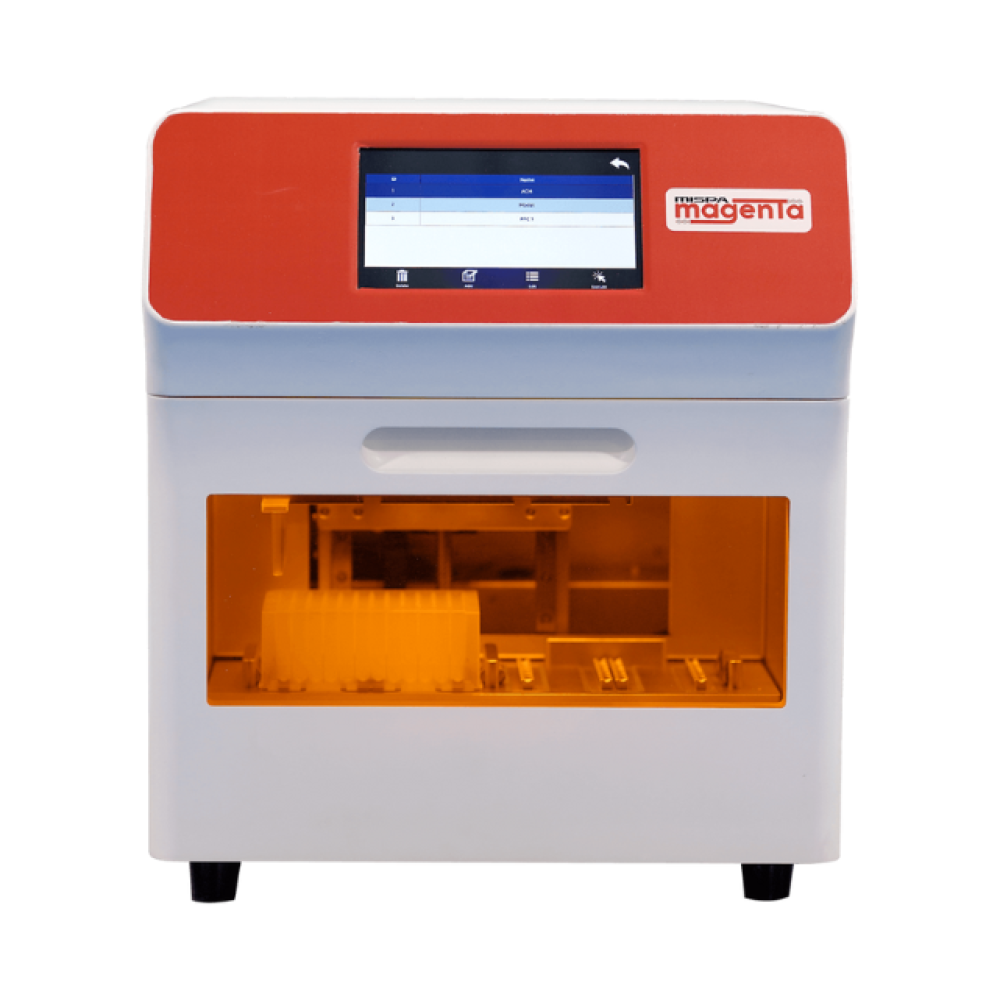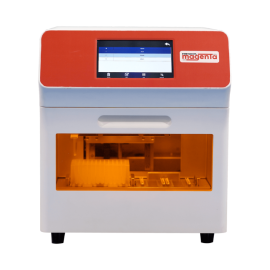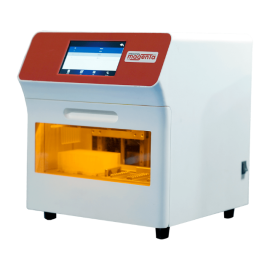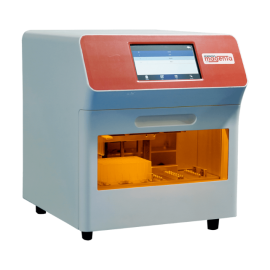Agappe Mispa MagenTa Automated RNA extraction machine
- Consumables & Disposables
- Critical Care & ICU Equipment
- Dental Equipment & Instruments
- Derma Products
- Diagnostics & Lab Equipment
- Home Care & Rehabilitation
- Hospital Furniture
- Operation Theatre (OT) Equipment
- Orthopedic & Prosthetics
- Others
- Pharma & Wellness
- Surgical Instruments
- Veterinary & Niche Medical Equipment
Your shopping cart is empty!
Product Description
Mispa MagenTa - Affordable Automated Nucleic Acid extraction machine
Mispa MagenTa is a fully automated compact nucleic acid extraction machine based on magnetic beads technology for high throughput applications providing the highest yield.
Nucleic acid extraction, also called nucleic acid isolation or nucleic acid purification, is a common but important task in a molecular biology lab. In many genetic and genomic studies, the first step is to separate the genetic material from the rest of the sample. Preparing good samples makes it more likely that your experiment will work and give you the desired results.
The optimal Automated Nucleic Acid Extraction Machine, most appropriate for locally created Agappe-Chitra Magna testing, is the Mispa MagenTa. 96 deep well plates are used for the run, and an 8-strip magnetic head is used. Lyse, Bind, Wash, Dry, and Elute are all completely automated processes in the Mispa MagenTa system. The elute was finally delivered to the elution well.
What are RNA Extraction and its uses?
The first step in isolating and extracting nucleic acid is to break up the cellular structures that hold the genetic material, such as nuclei, ribosomes, bacteria, and viruses. This is usually done by adding a compatible detergent, shaking the cell, or heating it.
From there, there are several common ways to clean up nucleic acid. The separation of nucleic acids is based on a different biochemical idea. Apart from biochemical procedures, magnetic bead-based technology is also available for the easy separation of nucleic acids, automation, and even enables high throughput. A method is chosen based on how much work needs to be done, what equipment is available in the lab, or how pure the product needs to be.
The goal of RNA extraction is to get pure RNA from biological samples that can be used for things like sequencing, analyzing the transcriptome, and testing for infectious pathogens. In many RNA-based molecular techniques, like RT-PCR, qRT-PCR, dPCR, RNA sequencing, array analysis, northern analysis, and making a cDNA library, the first and often most important step is to get high-quality RNA.
There are kits for several common ways to get RNA out of cells. Whether you choose an RNA extraction kit or an RNA isolation kit depends on the sample type, the throughput you need, or the lab equipment you have.
Difference between DNA and RNA extractions
The pH values are what traditionally distinguish DNA extraction from RNA extraction. The needed pH for the extraction of RNA is 4.7, but the pH for the extraction of DNA is 8. At an acidic pH, DNA has the propensity to denature and transition into the organic stage.
There is another significant distinction as well. RNA is purified through the extraction process, whereas DNA is purified through the extraction method. Catabolism of membrane proteins and lipids, cell lysis, clumping of catabolites by concentrated salt solution, and precipitation of DNA in the presence of ethanol are the stages through which DNA extraction progresses. Two optional phases can be included in this three-step method. The four stages of the RNA purification procedure include cell lysis, protein denaturation, RNA isolation using chloroform and phenol, and precipitate washing with ethanol.
In magnetic bead-based nucleic acid extraction, the technology works based on charge. After the lysis of the cell wall, negatively charged nucleic acid binds to the positively charged magnetic particle. This helps to separate the nucleic acids easily and efficiently.
Specialities of MagenTa Nucleic Acid extraction machine
The Mispa MagenTa works well with Agappe-Chitra Magna RNA Extraction Reagent. 96 deep well plates are used for the run, and an 8-strip magnetic head is used. The Lyse, Bind, Wash, Dry, and Elute steps of the Mispa MagenTa system are entirely automated, and the elute then delivered in an elution tube.
Magnetic separation method helps maintain intact longer fragments of the viral RNA- faster time to result in PCR - Magnetic separation can also be used in batch processes with a multitude of samples and is relatively easy to execute in high-throughput automated RNA isolation applications with high sample processing capability.
Mispa MagenTa can purify up to 32 samples simultaneously. Samples are loaded in specific wells of prefilled extraction cartridges and placed in the machine for extraction.






